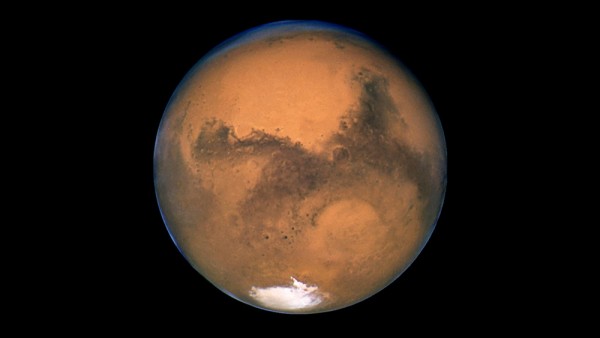The world was captivated Tuesday after NASA announced that flowing water had been discovered on Mars; thereby raising the probability that the red plant harbors life. It turns out the great discovery is old news: two space probes detected signs of microbial life on Mars as far back as 1976!
According to a controversial scientific report, NASA detected signs of microbial life in Martian soil, but destroyed it in the process. After scientists conducted further experiments that came back negative, NASA scrapped the original findings.
Two Viking spacecraft landed on the surface of Mars almost 40 years ago. They were the first space probes to land on Mars, and were sent there to search for microbial life. One study, known as the Labeled Release (LR) experiment, injected nutrients into the soil of Mars. The idea was that if the planet harbored microbial life, it would metabolize the nutrients injected into soil, and release it either in the form of methane gas or carbon dioxide.
Test for microbial martian life comes back positive
After the LR was conducted, the soil did indeed give off gas, most of which was carbon dioxide. NASA ruled out the possibility that life was responsible for the carbon dioxide emission, however, after two other experiments conducted under similar conditions came back negative.(1)
What is ironic is that if the space probes did indeed detect life in the first experiment, they destroyed it in the process. Each Viking lander had a robotic arm with a scoop that collected and cooked dirt to 160 C, which would kill any microbial life in the soil.(1)
The debate on whether Mars harbored microbial life didn’t end there. Gilbert Levin, who was in charge of a life-detection experiment on NASA’s historic Viking mission in 1976, claimed the space probes really did find signs of life on Mars. Levin, who argued liquid water flowed on Mars years before Tuesday’s announcement, has been critical of the agency ever since, stating NASA deliberately ignored evidence of life.(1)
Researchers re-examine old evidence
A fresh crop of scientists and mathematicians decided to re-examine the data collected by the first LR experiment. They applied a mathematical test to the experiment that separated biological signals from non-biological signals.(2)
When the calculations were said and done, the researchers found circadian rhythms in the amount of gas being released in the original experiment. Circadian rhythm is an internal biological clock all organisms possess which regulates sleeping patterns. The amount of gas emitted in the experiment was greater during the warmer parts of the day than the cooler parts of the day, suggesting it was dancing to the tune of a microbe’s circadian rhythm.(1)
The researchers published their results in the International Journal of Aeronautical and Space Sciences. “In this experiment 14C radio labeled nutrient was added to the Mars soil samples. Active soils exhibited rapid, substantial gas release. The gas was probably CO2 and, possibly, other radiocarbon-containing gases,” the researchers wrote.(1)
“We have applied complexity analysis to the Viking LR data…We conclude that the complexity pattern seen in active experiments strongly suggests biology. These analyses support the interpretation that the Viking LR experiment did detect extant microbial life on Mars,” they concluded.(1)
One member of the team, Dr. Joseph Miller, even went so far to state that he is 99 percent sure the space probe detected signs of microbrial life on Mars. Nevertheless, Dr. Miller contends that NASA will not be convinced that life exists on Mars until a space probe sends a feedback video to Earth recording microbial life sitting at the bottom of a petri dish.(1)
“To paraphrase an old saying, if it looks like a microbe and acts like a microbe, then it probably is a microbe,” Dr. Miller said.(2)
Keep up with all the news involving Mars and life on other planets at AlternativeNews.com
Sources include:
(1) SkyMania.com
(2) RediceCreations.com
















